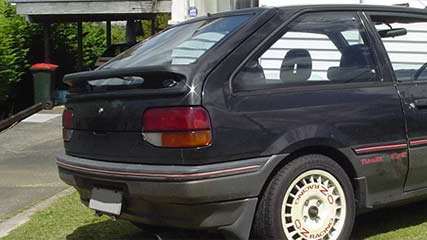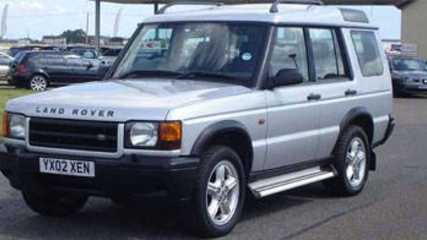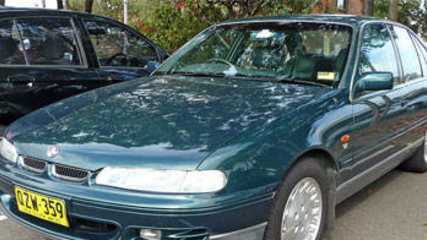Volvo 440 1994 Review
By Patrick Lyons · 21 Jan 1994
VOLVO'S 440 is the Swedish carmaker's newest yet oldest car on the Australian market - it was on sale in Europe for five years before its recent introduction here. Built in Holland, the 440 was desperately needed to fill the gaping hole caused by the demise of the 240, which was finally retired last year.Importantly, the 440 gives Volvo a hatch to sell in the popular $35,000-$40,000 range, which is dominated by the Japanese. While there is no mistaking the familiar shape, Volvo has used some styling tricks to give the impression the 440 is a scaled-down version of the 850. But it's almost half a metre shorter than the 850 and has less room than the 240, although there's only a hair's breadth in it. Volvo offers two versions of the 440 in Australia starting with the GL from $34,790 and the GLT, which I tested, from $37,290. Automatic transmission is an extra $2000 on each. The optional airbag ($1200) and anti-lock brakes ($1500) can lift the price of the manual GLT to $39,990 before on-road costs.EquipmentStandard equipmenton all 440s includes air-conditioning, central locking, power steering, tacho, four-speaker sound system and disc brakes. The 440 GLT, in addition, has electric front windows and door mirrors, leather upholstery, reading lamps, sports suspension with rear anti-sway bar, alloy wheels, rear spoiler and front fog lights.Volvo's seats are comfortable and supportive, showing up its Japanese competitors. Driving position is also excellent, with adjustable steering wheel and driver's seat. My only gripes with the interior are that the clutch pedal is set too far to the left, and you need to spend some time working out the radio controls which are not obvious at a glance.Under the bonnet is a peppy 2.0-litre single-cam engine which has its origins at Renault. The fuel-injected in-line four develops plenty of power for a car this size. But the engine's excessive noise is not helped by its needing 5200rpm to reach its 80kW peak. It is a relatively thirsty engine, consuming almost 15 litres for every 100km of hard testing.On the roadThe 440 engine's strength is its mid-range torque, with 90 per cent of the 165Nm maximum being available from about 2500rpm to more than 5000rpm. Such healthy pulling ability surprises passengers and other drivers who might expect sluggish performance from a Volvo.The 440's agility also comes as a pleasant surprise to those who have unfavorable pre-conceived notions about Volvos. Putting any bias aside, the front-drive 440 performs adequately on most roads with predictable understeer and plenty of grip through its 185/65 rubber.Undulating or potholed roads tend to upset the car's composure more than necessary, underlining the car's age when compared with its more recent rivals. Overall, the 440 is a solid performer although not as up-to-date as its rivals. But you always have the comfort of knowing you're surrounded by one of the best crash-protection cells available on the market.The competitionVolvo's 440 - slotting between $35,000 and $40,000 - is competing in one of the toughest segments of the market. The Mazda 626 from $34,405 and Ford Telstar from $35,721 are offered as a five-door hatch with a twin-cam 2.0-litre four-cylinder engine producing 85kW.Dynamically superior to the Volvo, their specification is comparable but a driver's airbag is not even an option and the Ford does not offer anti-lock brakes.Mitsubishi's Galant SE hatch from $34,384 also offers better driving from its 77kW four-cylinder engine but lacks an airbag and anti-lock brakes even as options.Citroen's BX hatch comes with a 88kW 2.0-litre four-cylinder fuel-injected engine from $32,290 or a 108kW 16-valve version with manual transmission only at $38,990.Sedans in this price range include the $37,990 Audi 80 2.0E, the $32,650 Honda Accord and the $32,495 Peugeot 405 SRI - all of which have the power, ride, handling and equipment to match or better the 440.









